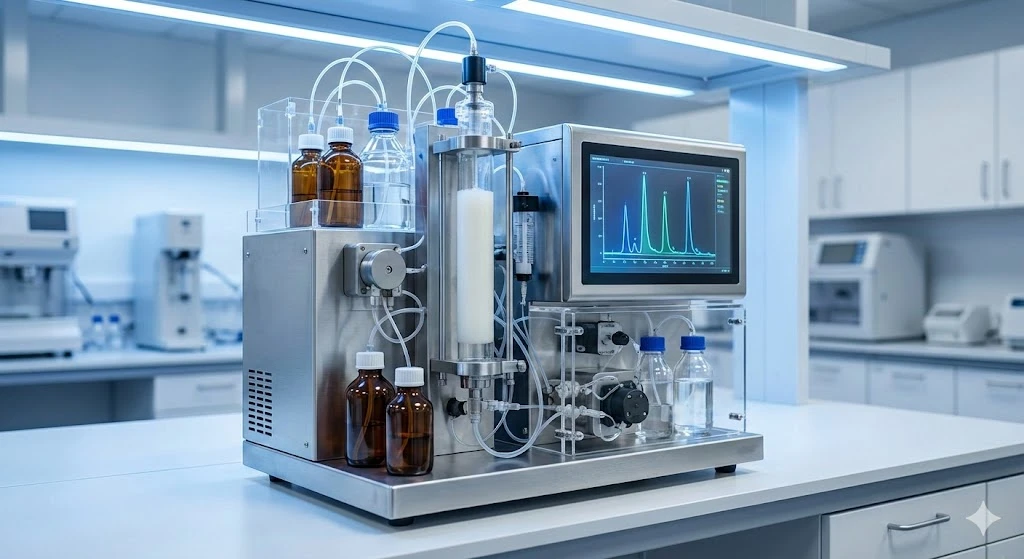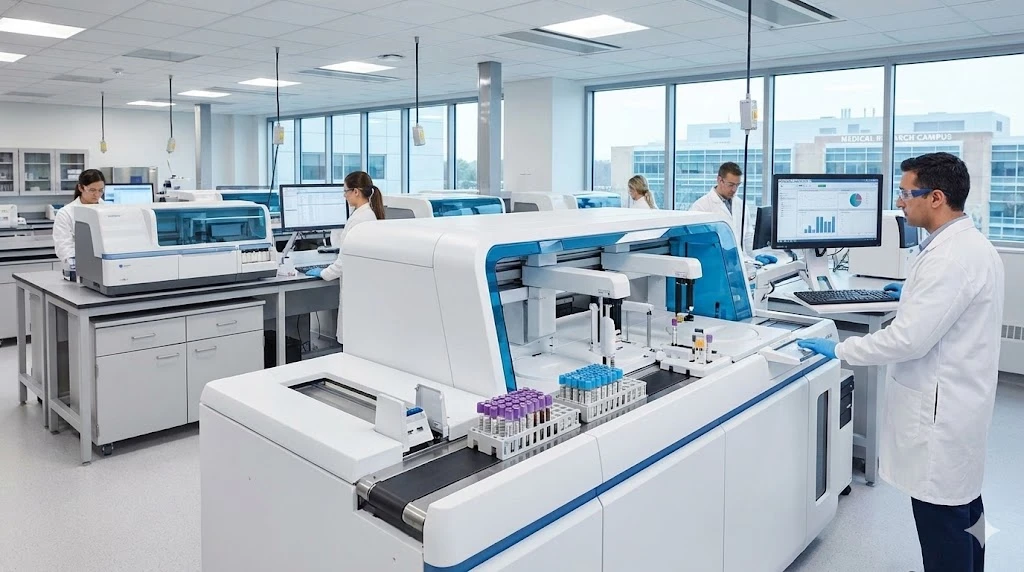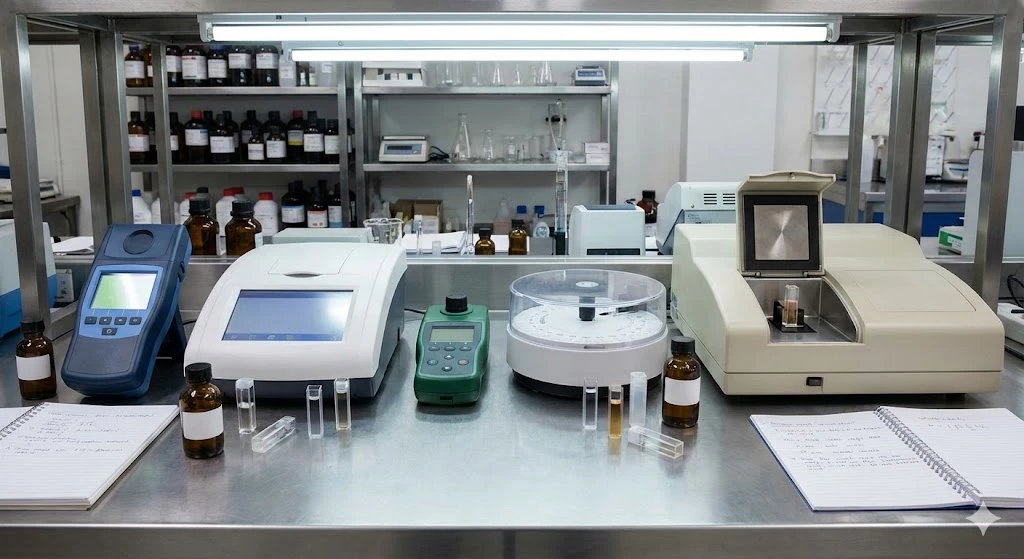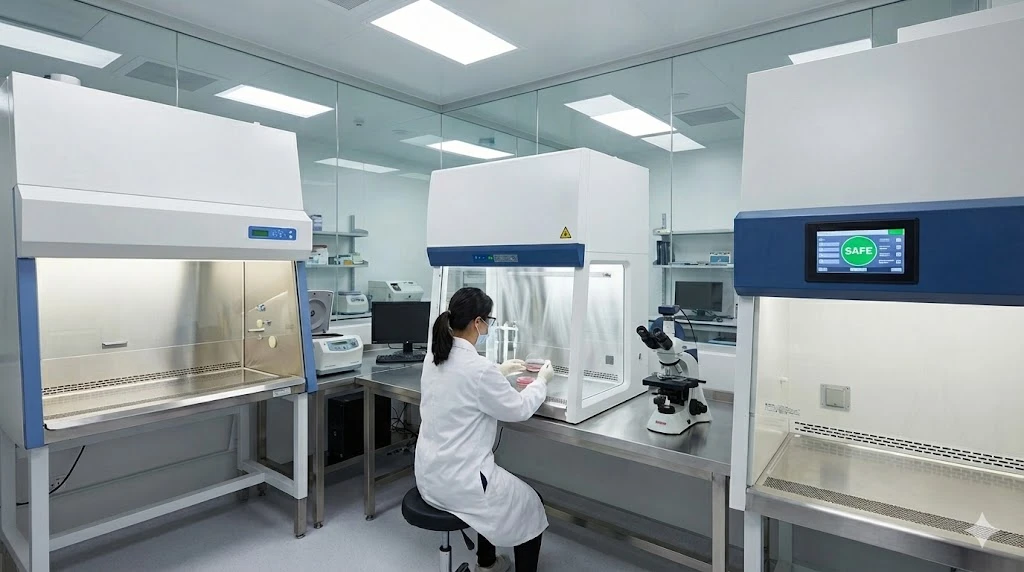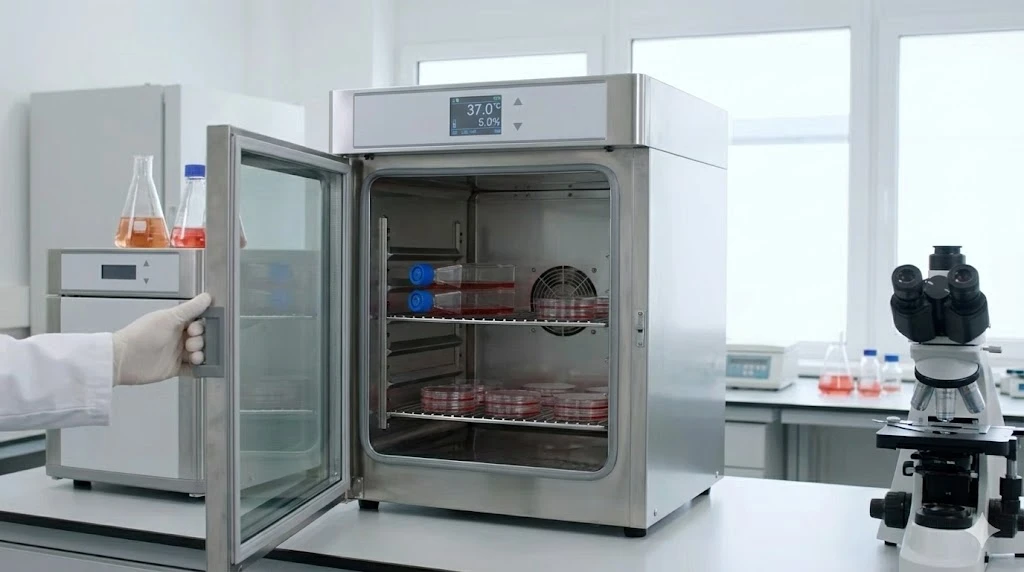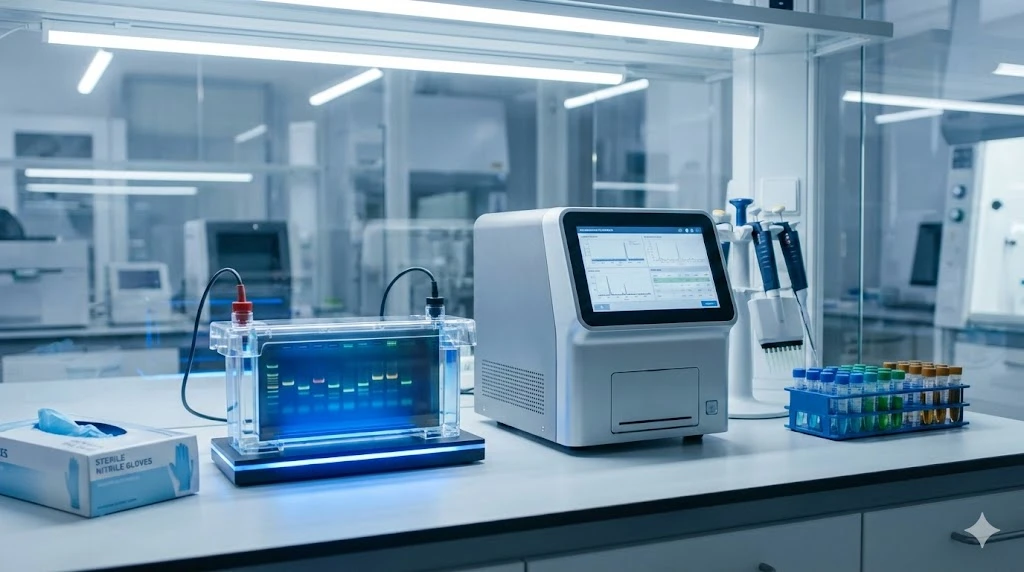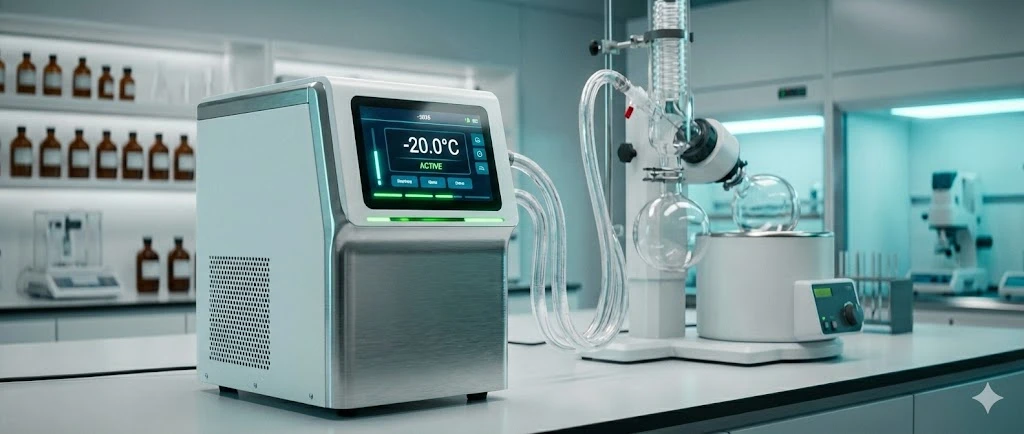Battery Calorimetry: Measuring Heat Generation and Dissipation for Thermal Management and Safety Studies
ImageFX (2025) For laboratory professionals engaged in battery research, development, and quality control, understanding and managing thermal behavior is paramount. Batteries, particularly lithium-ion cells, are inherently electrochemical devices that generate heat during operation, charging, and discharging cycles. This heat generation, if not properly controlled and dissipated, can lead to significant performance degradation, accelerated aging, and, in extreme cases, catastrophic thermal runaway events. Battery calorimetry provides the indispensable tools and methodologies to precisely measure the heat generated and dissipated by battery cells under various conditions. By quantifying these thermal characteristics, researchers can gain profound insights into a battery's energetic efficiency, identify critical thermal thresholds, and develop robust thermal management strategies. This article delves into the principles, applications, and significance of battery calorimetry, equipping lab professionals with the knowledge to leverage this powerful technique for enhanced battery safety, longevity, and performance. The operational efficiency and safety of any battery system are inextricably linked to its thermal state. Excessive heat can trigger a cascade of detrimental effects, impacting everything from charge acceptance to cycle life. For laboratory professionals, recognizing these thermal challenges is the first step toward effective mitigation. Performance Degradation: Elevated temperatures can lead to increased internal resistance, reduced capacity, and diminished power output. This is particularly critical in high-power applications where rapid charge/discharge rates exacerbate heat generation. Accelerated Aging: Chemical reactions within the battery, such as solid-electrolyte interphase (SEI) layer growth and electrolyte decomposition, are highly temperature-dependent. Higher temperatures accelerate these degradation mechanisms, leading to premature capacity fade and a shortened lifespan. Safety Risks: Perhaps the most critical concern, uncontrolled heat can initiate thermal runaway. This self-accelerating exothermic reaction can lead to venting, fire, or even explosion, posing severe risks in consumer electronics, electric vehicles, and energy storage systems. Understanding the thermal behavior under abusive conditions is crucial for preventing such incidents. Optimal Operating Window: Every battery chemistry has an optimal temperature range for efficient and safe operation. Deviating from this window, whether too hot or too cold, compromises performance and can lead to irreversible damage. Battery calorimetry offers a quantitative approach to characterize these thermal dynamics, providing the data necessary to design effective thermal management systems (BMS) and ensure the long-term reliability and safety of battery products. At its core, battery calorimetry is the science of measuring heat changes associated with chemical or physical processes occurring within a battery. It relies on the fundamental principle of energy conservation, where the heat generated or absorbed by the battery is measured by monitoring temperature changes in a controlled environment. Different types of calorimeters are employed, each suited for specific applications and offering unique advantages: Isothermal Calorimetry (ITC): Principle: Maintains the battery at a constant, uniform temperature while measuring the heat flow required to sustain this isotherm. Application: Ideal for long-term measurements of small heat flows, such as self-discharge, parasitic reactions, and low-rate cycling. Provides highly accurate heat generation rates under stable conditions. Advantages: High sensitivity, excellent baseline stability. Adiabatic Calorimetry (ARC - Accelerating Rate Calorimetry): Principle: Operates in "heat-wait-seek" mode, tracking the battery's temperature and heating the surrounding environment to match it, thereby preventing heat loss. This allows for the measurement of self-heating rates under near-adiabatic conditions. Application: Primarily used for safety studies, particularly to determine the onset temperature and self-heating rate of thermal runaway. It simulates worst-case scenarios where heat cannot escape. Advantages: Directly measures self-heating, crucial for thermal runaway characterization. Heat Flow Calorimetry (HFC): Principle: Measures the heat flow between the battery and a surrounding heat sink through a known thermal resistance. The temperature difference across this resistance is proportional to the heat flow. Application: Versatile for measuring heat generation during various charge/discharge cycles, abuse tests, and thermal characterization over a wide range of temperatures. Advantages: Can handle larger heat flows, suitable for dynamic conditions. Regardless of the type, a calorimeter essentially acts as a highly sensitive thermometer within a precisely controlled thermal environment, allowing for the accurate quantification of heat generation and dissipation. Battery calorimetry is an indispensable tool across the entire battery lifecycle, from fundamental material science to final product validation. For laboratory professionals, its applications are diverse and impactful: Material Characterization: Evaluating the thermal stability of new electrode materials, electrolytes, and separators. Quantifying parasitic reactions and their heat generation in novel chemistries. Cell Design Optimization: Assessing the impact of cell geometry, electrode thickness, and tab design on heat distribution and dissipation. Optimizing current collector design to minimize resistive heating. Thermal Runaway Studies: Determining the thermal runaway onset temperature, self-heating rate, and total heat released during runaway events using ARC. Investigating the effectiveness of various safety mechanisms (e.g., current interrupt devices, pressure relief vents). Battery Management System (BMS) Development: Providing critical thermal data for developing accurate thermal models used in BMS algorithms. Validating the efficacy of active and passive cooling strategies. Aging and Lifetime Studies: Monitoring heat generation profiles over extended cycling to understand degradation mechanisms. Correlating heat generation with capacity fade and internal resistance increase. Abuse Testing: Simulating external short circuits, overcharge, and nail penetration to quantify thermal response and safety margins. Assessing the thermal performance under extreme operating conditions. By providing quantitative thermal data, calorimetry enables informed decisions throughout the battery development process, leading to safer, more efficient, and longer-lasting battery systems. Battery calorimetry provides a wealth of quantitative data essential for comprehensive thermal analysis. Lab professionals utilize these parameters to characterize battery behavior and inform design improvements: Heat Generation Rate ( Total Heat Generated ( Specific Heat Capacity ( Thermal Conductivity ( Thermal Diffusivity ( Thermal Runaway Onset Temperature ( Maximum Self-Heating Rate ( These parameters, when analyzed in conjunction with electrochemical data, provide a holistic understanding of battery performance and safety, guiding the development of robust thermal management solutions. Battery calorimetry stands as a cornerstone in modern battery research and development. Its ability to precisely quantify heat generation and dissipation provides laboratory professionals with the critical data needed to enhance battery performance, extend lifespan, and, most importantly, ensure safety. As battery technologies continue to evolve, pushing the boundaries of energy density and power output, the role of sophisticated thermal characterization will only become more pronounced. By integrating calorimetric insights into material selection, cell design, and BMS development, the industry can overcome existing thermal challenges and unlock the full potential of next-generation energy storage solutions. For lab professionals, mastering battery calorimetry is not just about measurement; it's about driving innovation and building a safer, more sustainable energy future. A1: Thermal management is crucial because lithium-ion batteries generate heat during operation. Excessive heat can lead to reduced performance, accelerated aging (capacity fade), and severe safety risks like thermal runaway, which can cause fire or explosion. Proper thermal management ensures optimal operating temperatures for efficiency and longevity. A2: The main types are Isothermal Calorimeters (ITC), used for precise, long-term measurements of small heat flows like self-discharge; Adiabatic Calorimeters (ARC), essential for safety studies and determining thermal runaway onset; and Heat Flow Calorimeters (HFC), versatile for dynamic charge/discharge cycle heat measurements. A3: Battery calorimetry, particularly Accelerating Rate Calorimetry (ARC), directly contributes to safety by identifying the onset temperature and self-heating rate of thermal runaway. This data is vital for designing safer battery cells, modules, and packs, and for developing effective Battery Management Systems (BMS) that can prevent or mitigate thermal incidents. A4: Key thermal parameters include heat generation rate, total heat generated, specific heat capacity, thermal conductivity, thermal diffusivity, thermal runaway onset temperature, and maximum self-heating rate. These parameters provide comprehensive insights into a battery's thermal behavior under various conditions.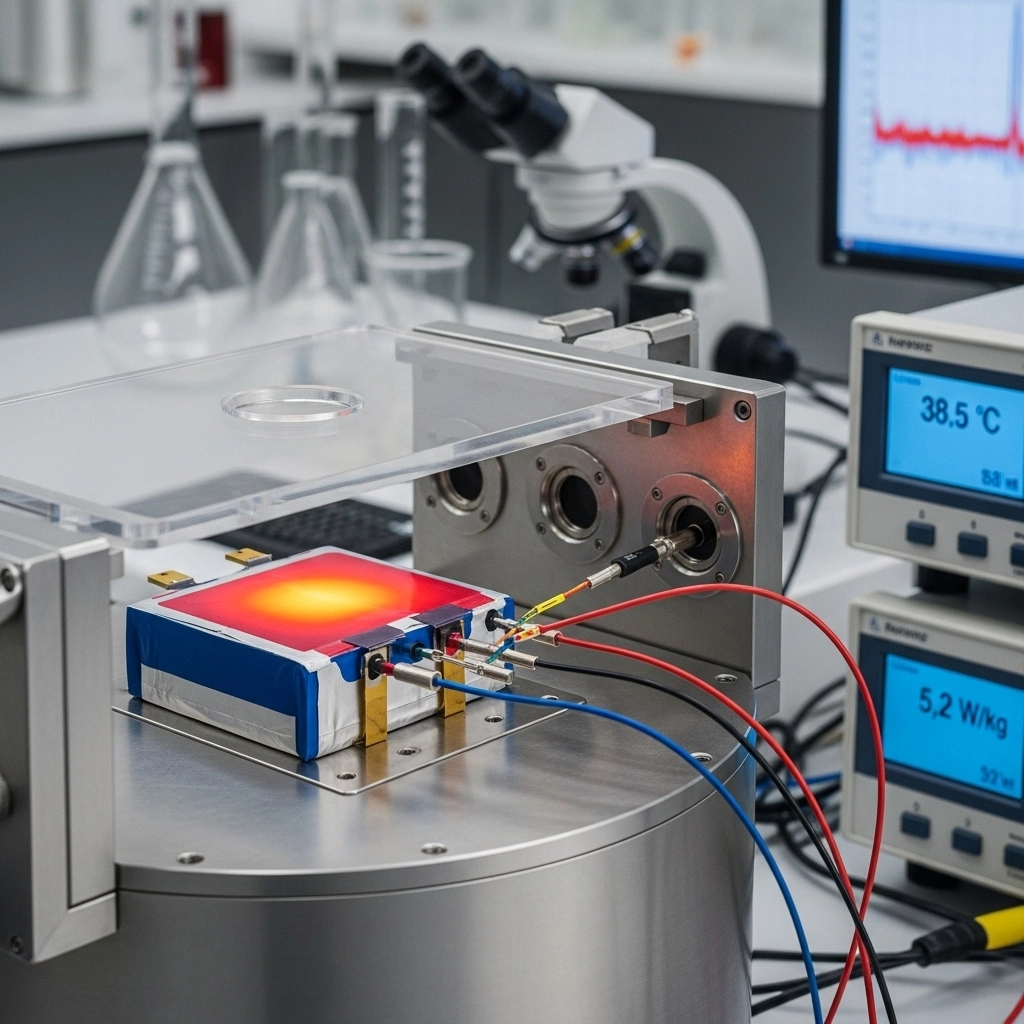
The Fundamental Importance of Battery Thermal Management
Principles of Battery Calorimetry: Quantifying Heat Flow
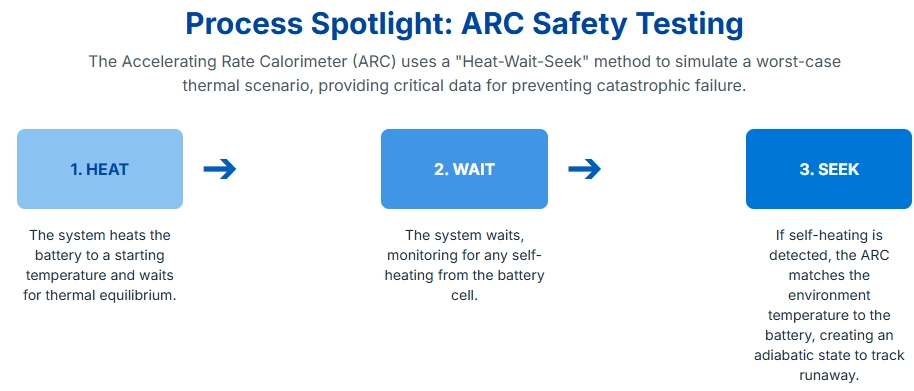
Applications of Battery Calorimetry in R&D and Quality Control
Key Parameters Measured and Their Significance
Conclusion: Battery Calorimetry – Essential for Advancing Thermal Management, Performance, and Safety in Battery Research
Frequently Asked Questions (FAQ)
Q1: Why is thermal management crucial for lithium-ion batteries?
Q2: What are the main types of battery calorimeters and their primary uses?
Q3: How does battery calorimetry contribute to battery safety?
Q4: What key thermal parameters can be determined using battery calorimetry?

